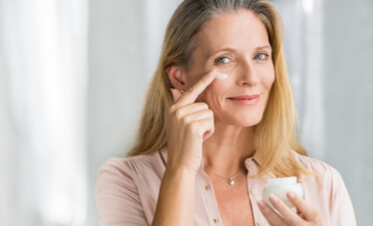
Vitiligo Repigmentation
Suitable For: Vitiligo
Downtime: Nil
Treatment Time: Short sessions 2-3 times per week for 20 weeks
Program: Anti-inflammatory creams and phototherapy sessions
What is the vitiligo repigmentation program at Northside Dermatology?
The foundation of this program is the use of anti-inflammatory creams combined with phototherapy sessions. This combination will give repigmentation to white patches of vitiligo in the majority of patients. The highest success rates are for early vitiligo on the face and neck areas. Long-standing vitiligo on the hands and feet tends to respond poorly to treatments; however, complete repigmentation can be achieved in some patients.
Our vitiligo repigmentation program entails the following:
- Dermatologists will tailor a prescription and protocol based upon the type and extent of your vitiligo.
- Two to three phototherapy sessions per week (spaced evenly within a week) are required to kick-start the pigment-producing cells in your patches of vitiligo.
- Treatment is usually given three times weekly for 20 weeks. If repigmentation is observed, treatment is continued until repigmentation is complete or for a maximum of one to two years.
- Treatment times are generally brief. The aim of each session is to cause the treated skin to appear very slightly pink the following day.
Is there anyone who can’t participate in the vitiligo repigmentation program?
Some patients who are excluded from our repigmentation program include:
- Patients who have a personal or direct family history of melanoma.
- Patients who have a history of photosensitive skin disorders, such as lupus.
- Patients who cannot perform at least two sessions of phototherapy per week.
- Children under the age of 5.
What is the cost of the vitiligo repigmentation program?
If you hold a valid Medicare card, then phototherapy sessions are bulk billed. A valid referral is required to ensure that the phototherapy sessions have no out-of-pocket expense. Please see information on consultation fees for other costs.
Schedule a Consultation With a Specialist Dermatologist
Vitiligo is not a cause for medical concern, but it can be a devastating influence on your mental health and social life. If you believe you may have vitiligo, the first step is getting a professional diagnosis. A specialist dermatologist can correctly identify the condition and share strategies for managing it with lifestyle modifications, medications and in-office treatments. Book an examination and receive a personalised vitiligo treatment plan at Northside Dermatology by calling us on 03 8582 8688
Send us a message
Contact Us
Hours of Operation
Monday - Friday, 9am-5pm
Phone Number
Fax Number
Emails
Medical Enquiries:
reception@northsidedermatology.com.auLaser & Cosmetic Enquiries:
cosmetic@northsidedermatology.com.au